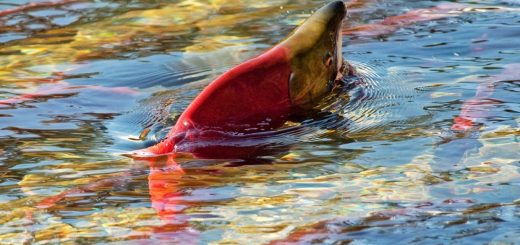The importance of macroinvertebrates in freshwater streams
Clean water is vital for maintaining healthy aquatic habitats. As areas become more developed, the impacts can be seen on the water quality of freshwater ecosystems. When it rains, pollutants such as fertilizers, pesticides and loose soil find their way into streams and rivers. These pollutants flow downstream through the watershed and ultimately find their way into lakes, estuaries and even the ocean.
In the United States, the Clean Water Act requires every state to establish water quality monitoring programs and report their findings to Congress every two years. In addition, other groups, such as environmental non-profit organizations and universities, also have water monitoring programs in place. These programs include conducting physical, chemical and biological assessments. Biological monitoring directly measures the health of the organisms living in the ecosystem. In wadable streams (streams that are shallow enough for people to walk through), benthic macroinvertebrate communities are commonly assessed.
Benthic macroinvertebrates are valuable bioindicators in freshwater streams and rivers. As the name suggests, they live along the stream bottom, are large enough to be seen without a microscope, and lack a backbone. These organisms live most, if not all, of their lives in the water. Unlike fish, they are relatively immobile and cannot escape from the effects of pollution. In the field, macroinvertebrates are relatively easy to collect using dip nets and kick nets, and they are considered to be a “canary in a coalmine” for water pollution.
Macroinvertebrates have a wide range of pollution tolerances and can be classified into three groups. The first group are organisms that are completely intolerant of pollution. These include:
- Mayfly nymphs (Figure 1)
- Stonefly nymphs
- Caddisfly larvae
- Hellgrammites (dobsonfly larvae)
- Gilled snails
- Water pennies
- Adult riffle beetles
They require the cleanest water for survival as well as high levels of dissolved oxygen. In particular, mayflies (Ephemeroptera), stoneflies (Plecoptera) and caddisflies (Trichoptera) are the most sensitive to changes in water quality. A large percentage of “EPT” taxa in a stream is indicative of clean water and good aquatic habitat.
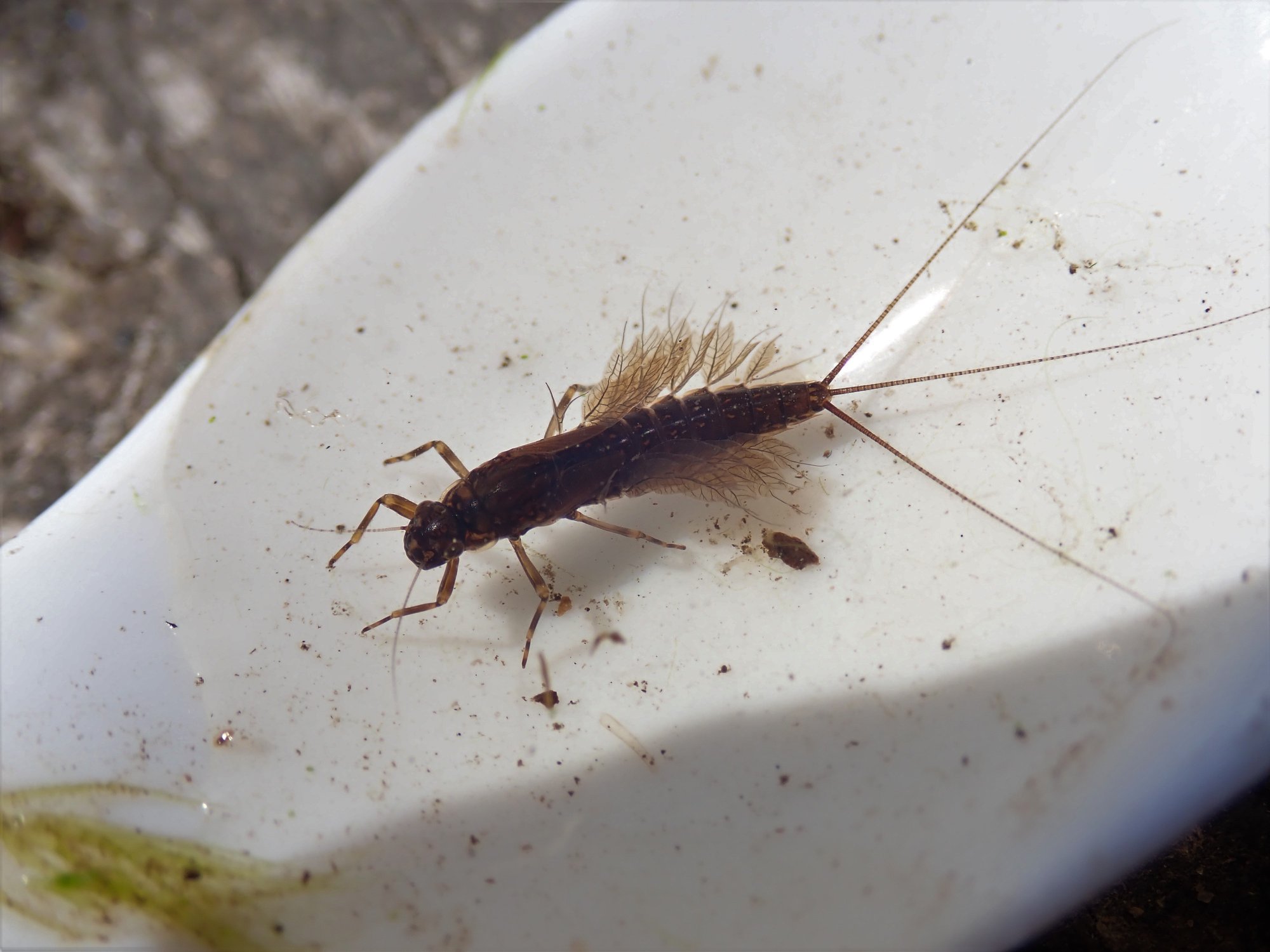
The second group are macroinvertebrates that are moderately tolerant of pollution. Included in this group are:
- Dragonfly nymphs
- Damselfly nymphs (Figure 2)
- Alderfly larvae
- Crane fly larvae
- Scuds
- Aquatic sowbugs
- Crayfish
- Freshwater clams
- Freshwater mussels
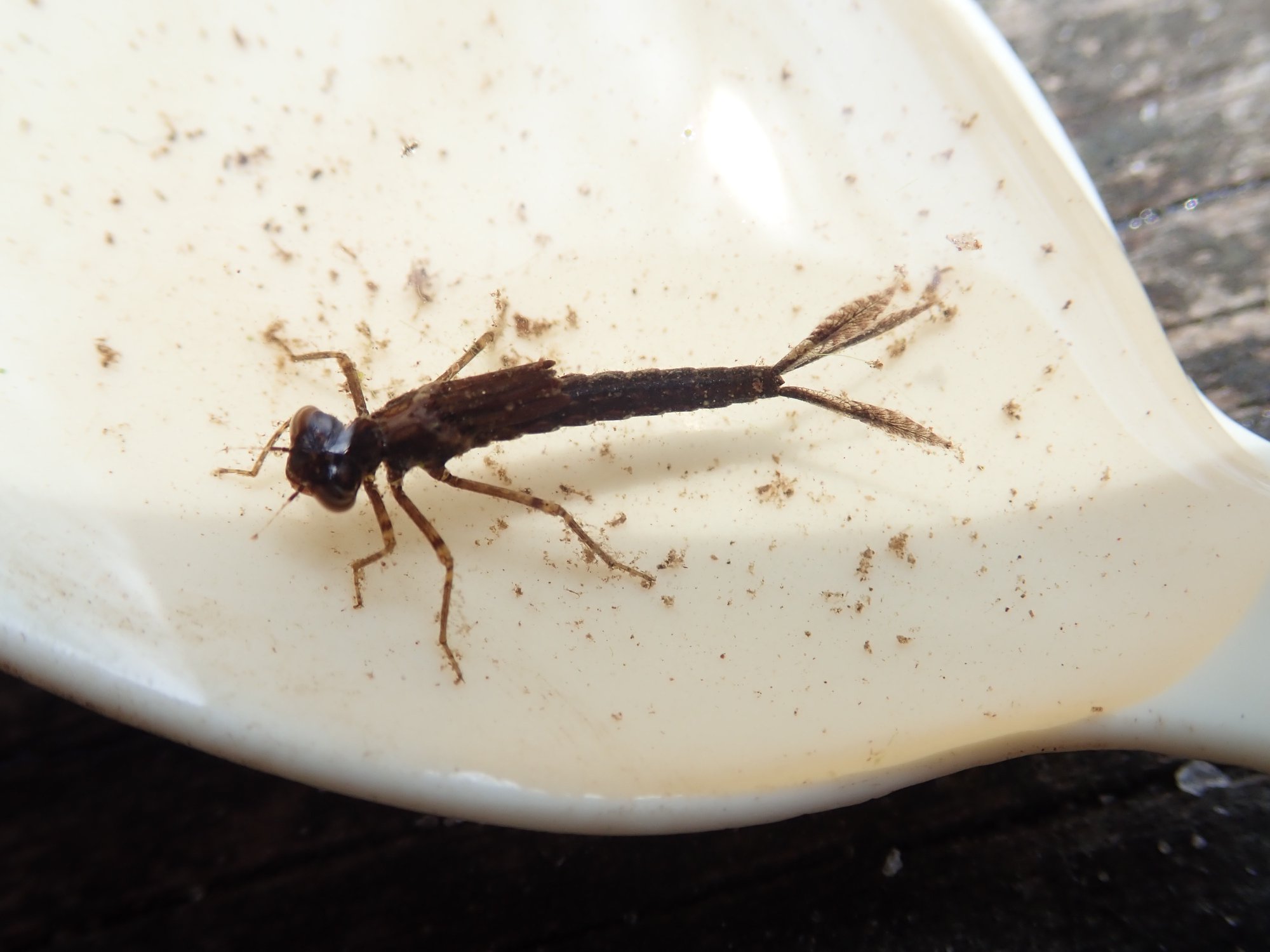
The third group are pollution tolerant macroinvertebrates. These include:
- Blackfly larvae
- Midge larvae
- Leeches (Figure 3)
- Aquatic worms
- Lunged snails
They can survive in areas with poor water quality and low dissolved oxygen levels.
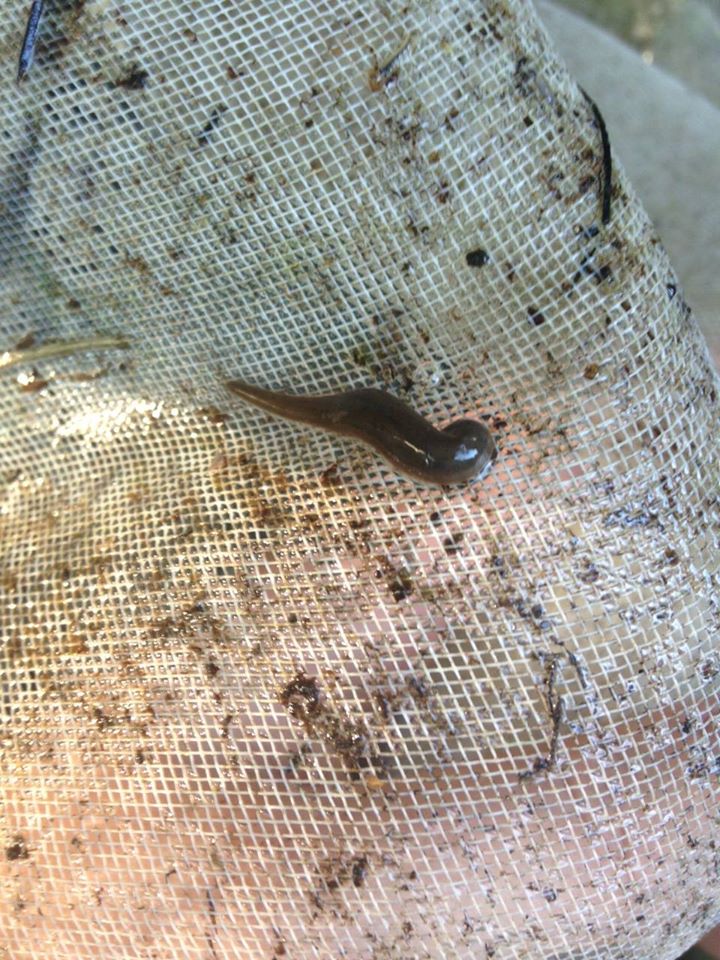
Macroinvertebrate indices are commonly used to analyze the health of freshwater streams. The scoring criteria are based on the streams in a particular region. They include collecting a subsample of macroinvertebrates and tallying the various taxa. A numerical value is calculated to provide a criterion (Excellent, Good, Fair, or Poor) to describe the biological integrity of the stream. Streams with excellent water quality will have macroinvertebrates present from all three groups. Severely impacted streams will only have pollution tolerant macroinvertebrates.
In addition to their use as bioindicators, macroinvertebrates are also important components of the stream food web. They are grouped according to their primary food source as shredders, collectors, grazers (scrapers) or predators. Shredders feed on larger pieces of organic matter such as leaves and woody debris. They include stoneflies (Figure 4) and some species of caddisflies. Collectors, such as blackflies and clams, gather or filter small organic particulates in the water column or along the bottom.
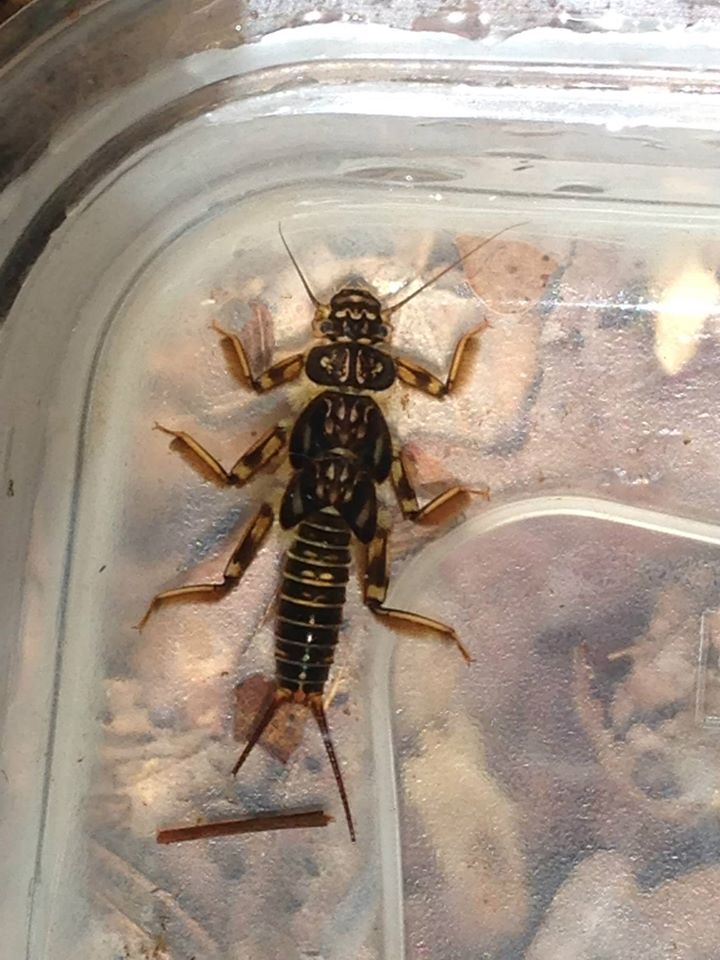
Grazers (or scrapers), such as mayflies and some caddisflies, feed on detritus, algae and aquatic plants. Predators are macroinvertebrates that only feed on animal tissue. Some of the most voracious predators along the bottom of a stream include hellgrammites and dragonfly nymphs. Hellgrammites have strong mandibles that they use to capture and tear apart their prey (Figure 5).

Dragonflies are the most effective predators in the animal kingdom. The nymphs typically prey on insect larvae and worms but larger species will even feed on small fish and tadpoles (Figure 6). After leaving the water and emerging as an adult, dragonflies feed primarily on mosquitoes and flies. They capture their prey in mid-air and typically have a 95% success rate.
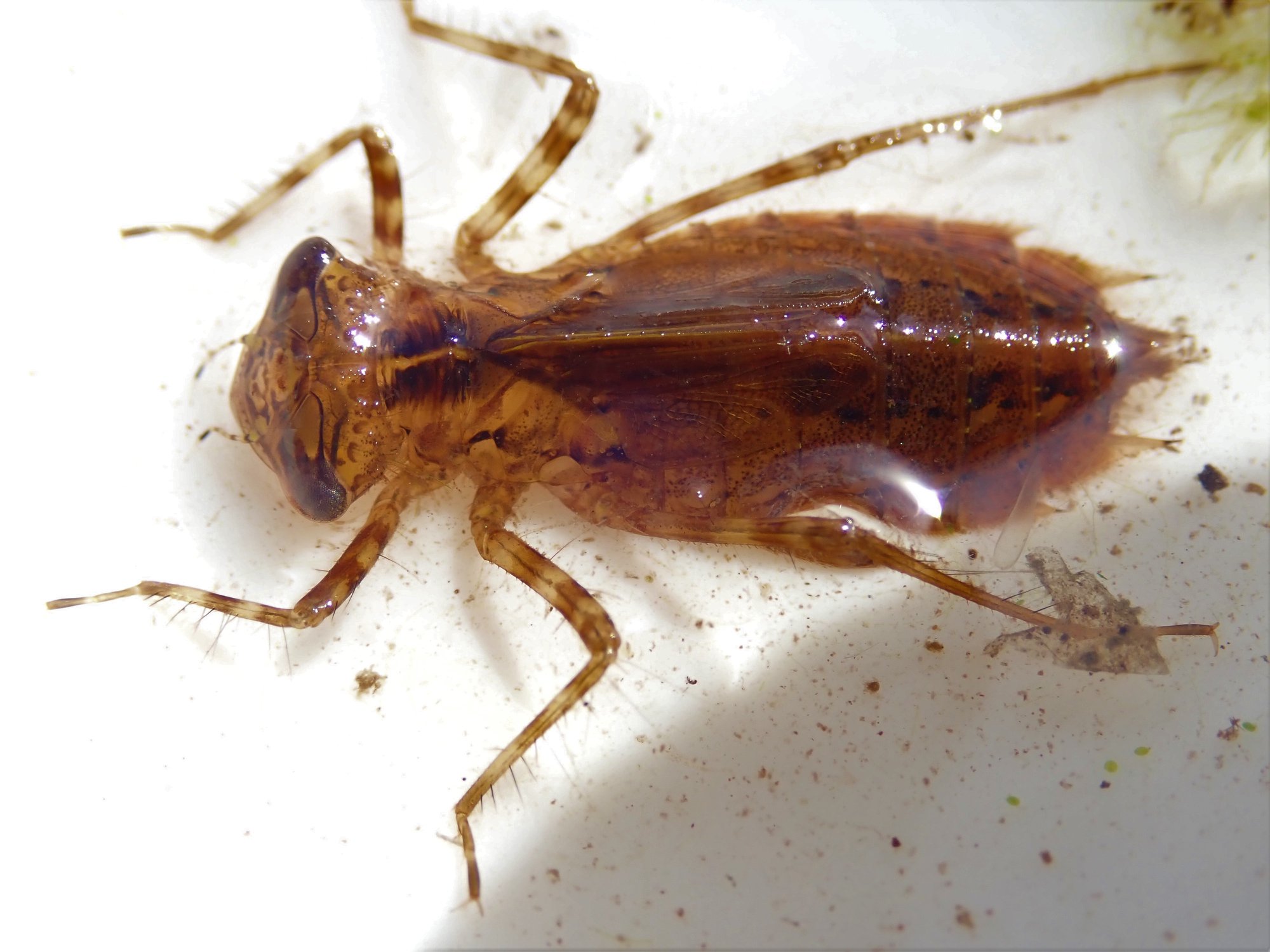
Macroinvertebrates are also an important food source for many stream fish species, including trout. In coldwater streams around the world, trout are popular game fish amongst anglers. Many anglers use a technique called fly fishing where they use specialized lures called flies to imitate the macroinvertebrates found in the stream (Figure 7). After insect larvae mature underwater, they leave the stream bottom en masse and head for the surface in an event called a hatch. During the hatch, trout selectively feed only on the insects that are emerging from the bottom. To be successful, fly anglers must identify the insects emerging, their behaviors and their colors to select a fly to use to “match the hatch”. Macroinvertebrates are a large part of the diet of most species of trout. In streams where macroinvertebrate numbers have declined, trout populations have also declined.

Macroinvertebrates can reveal a lot about the health of a freshwater stream. They are key indicators of water quality and are an important part of the stream food web. These small and often forgotten aquatic organisms also support some of the most popular recreational fisheries in the world.

